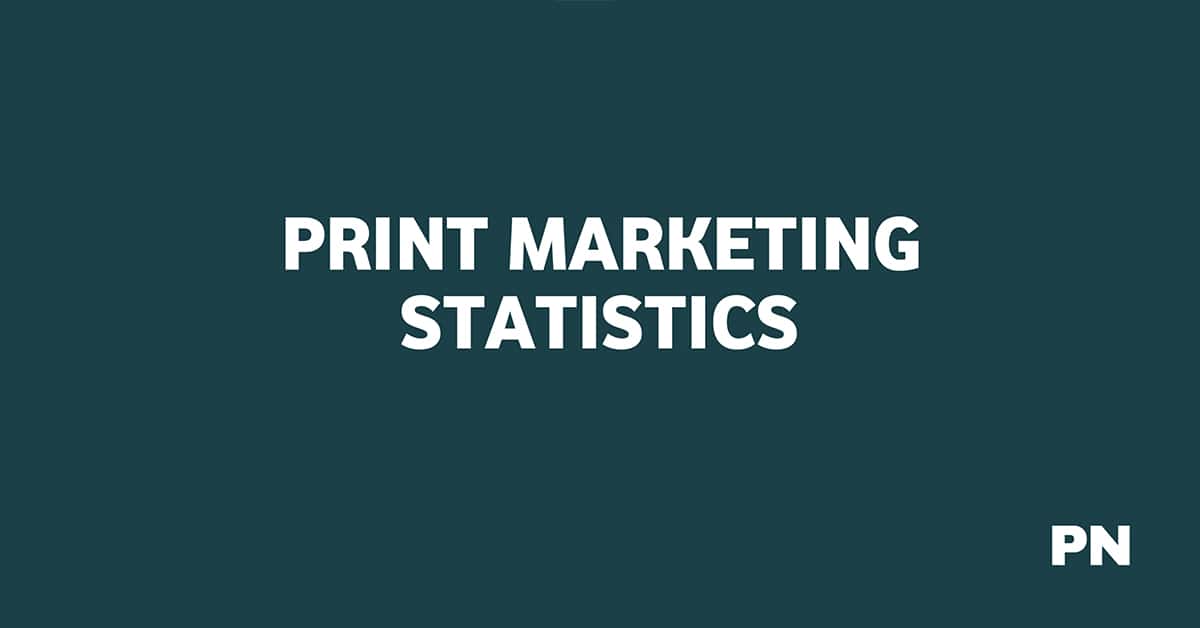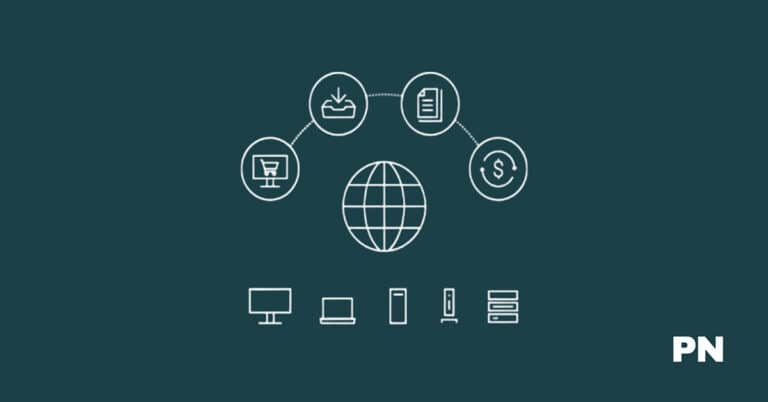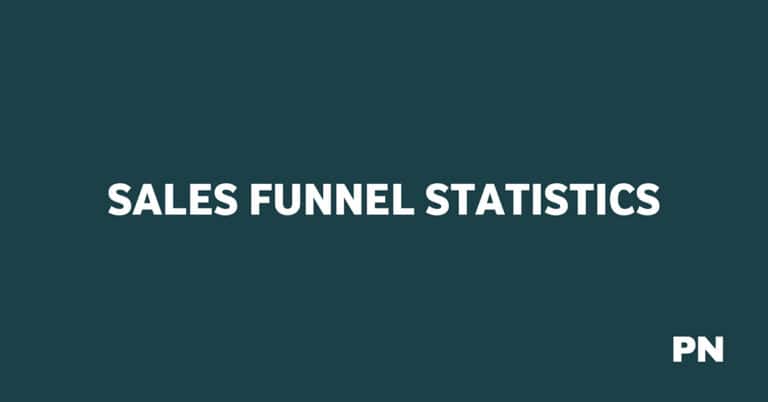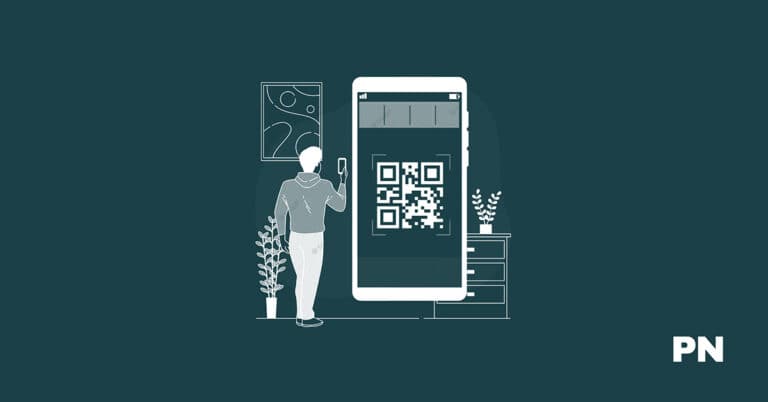31+ Print Marketing Statistics & Market Size (Latest Report)

Know this for a fact: Print advertising is not dead!
Print marketing is a centuries-old advertising method. Although digital marketing has taken over the industry, print marketing still holds its ground.
Did you know that print advertisements receive an average response rate of 9%, while email, paid search, and social media receive about 1%?
This is just one of the many fascinating statistics that demonstrate the effectiveness of print marketing.
Print marketing has a 70-80% higher recall rate than digital advertising.
These statistics show that print marketing is still a powerful tool businesses can use to reach their target audience.
1. 70% of households with an income above $100,000 are newspaper readers.
(Source: Mansi Media)
Regarding print marketing, newspapers still hold a significant place in the market.
One of the reasons why newspapers are still popular among high-income households is their credibility.
Newspapers have been around for a long time and have established a reputation for being a trustworthy source of information.
Another reason why newspapers are still relevant is their local focus.
Many newspapers cover local news and events, which makes them an excellent advertising channel for businesses that want to reach a local audience.
This is especially important for small businesses that rely on local customers.
If you’re considering advertising in newspapers, remember that different newspapers have different readerships.
You’ll want to choose a newspaper that matches your target audience.
For example, if you’re targeting high-income households, you might want to consider advertising in a business or financial newspaper.
2. Print advertisements receive an average response rate of 9%, while email, paid search, and social media receive about 1%.
(Source: DMA)
Compared to some digital marketing strategies, print advertisements are more likely to generate a response from potential customers. This can lead to increased sales and revenue for your business.
Additionally, print advertisements require 21% less cognitive effort to process than digital advertisements, making them easier for consumers to understand and remember.
However, while print advertisements may have a higher response rate, they may not be the most cost-effective option for every business.
Depending on your target audience and marketing goals, you may also need to consider other advertising mediums.
Print advertisements can be a valuable addition to your marketing strategy, especially if you want to reach a broad audience and generate a higher response rate.
Combining print advertising with other marketing channels can create a comprehensive strategy that maximizes your reach and ROI.
3. Print marketing has a 70-80% higher recall rate than digital advertising.
(Source: C4B Media)
Recall rate refers to a consumer’s ability to remember a brand or product after seeing or hearing an advertisement.
Consumers are more likely to remember a brand or product when they see it in print, such as in a magazine or newspaper, than when they see it online.
One reason for this higher recall rate is that print marketing is more tangible than digital advertising.
Holding a physical piece of marketing material, such as a brochure or flyer, creates a more memorable experience than simply seeing an ad on a screen.
Additionally, print marketing often has a longer lifespan than digital advertising, as it can be kept and referred to multiple times.
Another factor contributing to print marketing’s higher recall rate is that it is often perceived as more trustworthy than digital advertising.
Consumers are bombarded with digital ads daily, and many of these ads can be intrusive or misleading.
In contrast, print marketing is seen as more authentic and credible, which can help build consumer trust.
Overall, the higher recall rate of print marketing makes it a valuable tool for businesses looking to build brand awareness and increase sales.
4. When print advertisements are used with email marketing, businesses average a 49% increase in sales and a 125% increase in inquiries.
(Source: HBR)
If you’re looking for ways to boost your sales and inquiries, consider combining print advertising with email marketing.
Print advertising and email marketing work together to create a more comprehensive and effective marketing strategy.
Print advertising can help you reach potential customers who might not be online or who are less likely to check their emails.
On the other hand, email marketing can help you reach customers who are always on the go and might not have the time to read print ads.
Print advertising can create brand awareness and provide more detailed information about your products or services.
You can then use email marketing to follow up with potential customers, provide them with more information, and encourage them to take action.
Combining print advertising with email marketing can be a powerful way to increase your sales and inquiries.
However, it’s important to ensure that you’re targeting the right audience and that your message is clear, concise, and engaging.
5. Direct mail generates a 4.9% response rate compared to email’s 0.1% response rate.
(Source: DMA)
Regarding print marketing, direct mail is one of the most effective methods.
This means that direct mail is almost 50 times more likely to generate a response from recipients than email.
One reason for this is that direct mail is its targeting capabilities.
Direct mail allows you to target specific demographics and geographic regions to ensure that your message reaches the right audience.
This can increase the likelihood of a response and improve the overall ROI of your marketing campaign.
However, while direct mail can be effective, it’s not a one-size-fits-all solution.
The success of your direct mail campaign will depend on various factors, including the quality of your mailing list, the design and messaging of your mail piece, and the timing of your campaign.
Direct mail is a powerful tool for print marketing that can generate high response rates and improve the ROI of your marketing campaigns.
6. The global Print Advertising market is expected to reach U.S.$ 46.23 billion in 2024.
(Source: Statista)
Print advertising has existed for centuries. While digital advertising has taken over in recent years, print advertising still has its place in marketing.
Print ads are tangible and can be more memorable than digital ads.
These ads can also be targeted to a specific audience, benefiting businesses with a niche market.
7. Advertising mail is the third largest media channel in the UK, worth an estimated £1.7bn annually.
(Source: Post Hub)
One reason advertising mail is still so popular is that it can be highly targeted.
With the right data, you can send your mailings to people more likely to be interested in your product or service.
This can help you get a better return on investment, as you’re not wasting money on advertising to people who are unlikely to be interested.
Of course, there are some downsides to advertising mail as well.
It can be more expensive than other forms of advertising, and there’s always the risk that your mailings will be ignored or thrown away.
However, if you can create a compelling message and target the right people, advertising mail can still be a valuable part of your marketing mix.
8. Ad spending in the Print Advertising market in the United States is forecasted to reach US$10.36bn in 2024.
(Source: Statista)
The largest market within the Print Advertising market in the United States is Magazine Advertising, with a market volume of US$5.34bn.
Other areas of print advertising, such as Newspaper, Direct Mail, and Catalog Advertising, also contribute to the overall market.
While digital advertising has grown in recent years, print advertising still has advantages.
9. A study shows that 75% of consumers feel special when receiving print advertisements.
(Source: USPS)
The study also revealed that 73% of consumers prefer receiving print advertisements over other forms of advertising.
This suggests that print advertising’s tangible nature resonates well with consumers. It creates a lasting impression and can be revisited multiple times.
Moreover, print advertising is more trustworthy than digital advertising.
The internet is full of scams and fake advertising, which can make consumers unsure whether to trust a digital ad or not.
In contrast, print advertising is seen as more credible and trustworthy.
10. Newspapers and magazines are 63% popular among consumers, while the Internet is just 25%.
(Source: Pew Research)
One reason for this could be consumers’ trust in print ads. In fact, 61% of readers trust newspaper ads, while only 42% give credibility to online ones.
This trust could be due to the physical nature of print ads and the fact that they have been around for much longer than online ads.
Another advantage of print marketing is combining it with digital ads to create a more effective campaign.
By using both mediums, businesses can increase their reach and engagement by up to 400%. This is because print ads can drive traffic to digital platforms and vice versa.
11. The largest market within the print advertising market is Newspaper Advertising, with a market volume of US$33.35bn in 2024.
(Source: Statista)
12. Consumers who see print ads tend to visit the advertiser’s website, with a 27% increase in 2020 from 12% in 2009.
(Source: Newsworks)
One of the most significant advantages of print marketing is its ability to drive traffic to the advertiser’s website.
The increase in website visits is not the only benefit of print ads.
Consumers who notice print ads are also more likely to have an increased purchase intent.
According to Newsworks, the purchase intent of consumers who notice print ads increased to 22% in 2020 from 7% in 2009.
This means that print ads drive traffic to the advertiser’s website and increase the likelihood of a purchase.
13. 56% of consumers find print marketing the most trustworthy type of marketing.
(Source: DMA)
When it comes to marketing, trust is a critical factor.
Consumers are more likely to buy from a brand they trust, and they are more likely to trust a brand that uses print marketing.
This statistic highlights the importance of print marketing in today’s digital age. While digital marketing has benefits, print marketing remains a powerful tool for building consumer trust and credibility.
Whether it’s a brochure, a flyer, or a direct mail piece, print marketing can help you connect with your audience in a way that digital marketing simply can’t.
So why do consumers trust print marketing so much?
Consumers perceive print marketing as more legitimate.
In a world where anyone can create a website or social media account, print marketing stands out as a more official and trustworthy source of information.
Consumers are more likely to believe what they read in print than what they see online.
14. 44% of consumers visit a brand’s website after receiving direct mail advertising.
Direct mail advertising has been a popular marketing strategy for many years. It involves sending promotional materials, such as flyers, brochures, and postcards, directly to potential customers’ mailboxes.
This high percentage of consumers visiting a brand’s website after receiving direct mail advertising is a testament to the effectiveness of this marketing strategy.
Direct mail advertising can help businesses increase their online presence and drive traffic to their website.
To make the most of direct mail advertising, ensure the promotional materials are visually appealing and provide clear and concise information about the products or services offered.
Including a call-to-action, such as a discount code or a limited-time offer, can also encourage consumers to visit the brand’s website and purchase.
In addition, businesses can track the success of their direct mail advertising campaigns by using unique URLs or QR codes on their promotional materials.
This allows them to measure the number of website visits and purchases generated by the direct mail campaign.
Direct mail advertising remains a valuable marketing strategy for businesses looking to increase their online presence and drive traffic to their website.
15. For nonprofits, print ads generate about 78% of donations.
(Source: DMA)
If you’re a nonprofit organization looking to increase donations, print advertising may be a powerful tool to consider.
Print advertising may be particularly effective for nonprofits because it can help build trust with potential donors.
Consumers tend to trust print ads more than digital ads, making them more likely to take action on print ads.
Additionally, print ads can be personalized and customized for each recipient, making them feel more targeted and relevant.
16. 8 out of 10 people trust print advertisements the most when purchasing.
(Source: PR Newswire)
This finding indicates that print advertising is crucial in shaping consumer trust and choices and aids in establishing brand credibility, especially among potential customers who are skeptical about online advertising.
Moreover, print readers usually spend 20 minutes or more with their publication in hand, while a typical visitor to a digital news site stays less than five minutes. This means that print ads have a longer lifespan and are more likely to be remembered by consumers.
Additionally, people who receive print ads buy 28% more items and spend 28% more than those who do not receive print ads.
The statistics suggest that print marketing is still relevant and effective in today’s digital age.
17. Approximately 80% of customers respond to direct mail commercials, compared to just 45% for internet ads.
If you want to promote your business, it is important to understand the effectiveness of different marketing channels.
This means that direct mail marketing can be a more effective way to reach your target audience and generate leads.
18. 81% of monthly newspaper readers continue to read the print version, while 51% do not read other news sources.
(Source: Media Post)
While digital media has advantages, print media has unique benefits that cannot be replicated in the digital world.
Print media offers a tangible experience that engages readers on a deeper level. It also has a longer lifespan than digital media, as print materials can be kept and referred to over time.
Advertisers should consider print media a viable option for their marketing campaigns, as it offers unique benefits that cannot be replicated in the digital world.
19. One-third of adults believe the amount of information available online today is overwhelming.
(Source: Pew Research)
20. 90% of print ads are opened, while only 20-30% of emails get opened.
(Source: DMA)
In marketing, getting your message seen is half the battle. Print advertising has a distinct advantage over digital advertising because it is more likely to be seen by the recipient.
This is because print advertising is tangible and can be physically held and examined.
Print ads can also be strategically placed where they are more likely to be seen, such as on a billboard or magazine. This makes print advertising a great way to reach a wide audience.
On the other hand, digital advertising is often viewed as intrusive and can be easily ignored or deleted.
With so many emails flooding our inboxes daily, it’s easy for important messages to get lost in the shuffle. This is why print advertising can be a more effective way to communicate your message.
21. The global print advertising market reached $32.5 billion in 2023.
(Source: iMarc Group)
Print advertising is a form of marketing that uses printed media to promote a product, service, or idea.
The steady growth of the print advertising market is driven by the growing demand for tangible advertising solutions, the rising need for reliable and credible information, and the incorporation of digital technologies into print media.
Retail, electronics and telecommunications, insurance and finance, and other industries are the major contributors to the growth of the print advertising market.
The market is also driven by the increasing adoption of cross-media campaigns and targeted advertising and the bolstering growth of the packaging industry.
22. In 2023, the print-on-demand business reached a market size of $8.03 billion, adding to the growth of eCommerce.
(Source: Precedence Research)
Print-on-demand (POD) has become a popular business model in recent years. It allows entrepreneurs and individuals to create customized products without the need for inventory or production facilities.
The report also suggests that the POD industry has played a significant role in the steady growth of eCommerce.
As more consumers turn to online shopping, businesses seek ways to differentiate themselves.
They can attract new customers and build brand loyalty by offering unique and customized products.
One of the key advantages of print-on-demand is its flexibility.
Businesses can quickly and easily create new designs and products, test them in the market, and make changes based on customer feedback. This allows them to stay ahead of the curve and respond to changing trends and preferences.
As the market for print-on-demand continues to grow, businesses will need to stay current with the latest trends and technologies.
This includes investing in high-quality printing equipment, developing innovative designs, and leveraging social media and other marketing channels to reach new customers.
Whether you’re a small business owner or an individual looking to start your POD venture, the future looks bright for this dynamic and exciting industry.
With the right tools, strategies, and mindset, you can tap into the growing demand for personalized products and build a successful and profitable business.
23. On average, sellers need 165 days to reach their first $1,000 income. Successful merchants achieve this in less than 118 days.
(Source: Printify)
If you’re a new seller looking to profit from print-on-demand products, it’s important to understand that success doesn’t happen overnight.
You don’t need to give up if you don’t see immediate results.
Building a successful print-on-demand business takes time and effort. In fact, many sellers give up before they even have a chance to get started properly.
A key factor contributing to success is having a solid marketing strategy.
This includes creating designs that resonate with your target audience, developing an authentic brand voice, and effectively promoting your store through various channels.
Another important aspect is understanding your niche and staying up-to-date with current trends.
By regularly researching your market and competitors, you can make informed decisions about which products to offer and how to price them.
While it may take some time to see significant revenue from your print-on-demand business, with dedication and a strategic approach, you can succeed in a reasonable amount of time.
24. Print readers typically spend 20 minutes or more with their publication, whereas the average visitor to a digital news site stays for less than 5 minutes.
(Source: Heitman)
According to research, print readers tend to read more stories and engage with a greater volume of content.
This means that print advertising has a higher chance of being noticed and remembered by the target audience.
In addition, print ads require 21% less cognitive effort to process, making it easier for readers to understand and remember the message.
Print marketing statistics show that print readers typically spend more time with their publications. This makes print advertising an effective way to reach and engage the target audience.
Hence, combining print and digital ads can make online campaigns more effective and help establish a deeper connection with the audience.
25. Print Advertisements Need 21% Less Cognitive Effort to Process Than Digital Ads.
(Source: Forbes)
Print ads offer a more immersive experience as they can appeal to multiple senses.
For example, a print ad can use high-quality images, colors, and textures to create a more engaging experience for the viewer.
This can lead to a higher emotional response, leading to greater conversion rates.
26. Combining print and digital ads can increase online campaigns’ effectiveness by 400%.
(Source: Top Media Advertising)
Print ads can drive digital marketing by including calls to action (CTA), such as website addresses, social media URLs, QR codes, and hashtags.
This approach makes it easy to track the results of your print ad campaigns and amplify your calls to action.
What’s more, combining print and digital allows for additional touchpoints in the customer journey, helping to boost brand awareness and improve engagement.
Print not only adds more touchpoints, but it also adds variety and memorability to your campaigns, helping your brand stand out.
27. Print advertising provides more precise targeting options than Internet advertising.
Unlike digital ads, print ads can be placed in specific publications that cater to a particular demographic.
For instance, if you’re looking to target an older audience, placing an ad in a magazine or newspaper that is popular among that age group would be more effective than a digital ad campaign.
Additionally, print advertising allows for more creative and engaging ads that can grab the reader’s attention and leave a lasting impression.
Print ads can be designed to be visually appealing, with bold colors, unique fonts, and eye-catching graphics. This can help your ad stand out in a sea of digital ads that can often be ignored or blocked by ad blockers.
Another benefit of print advertising is tracking and measuring its effectiveness.
By including a unique URL or phone number in your print ad, you can track how many people responded to your ad and where they came from.
This data can help you refine your advertising strategy and target your audience more effectively.
28. Print advertising generates billions of dollars internationally, sustaining jobs in various businesses.
(Source: Forbes)
Businesses recognize the enduring power of print media, and investments in newspaper and magazine ads continue to rise.
The print advertising industry sustains jobs in various businesses, from printing companies to advertising agencies to printing equipment manufacturers.
The industry creates employment opportunities for graphic designers, copywriters, sales representatives, and other professionals.
29. Print advertising remains critical for local businesses, giving targeted reach and community connection.
(Source: Strikingly)
In addition to targeting specific areas, print advertising offers a tangible and personal touch that digital marketing cannot match.
By placing your ad in a local newspaper, magazine, or direct mail piece, you can create a sense of community connection that resonates with your audience.
This can help you build customer trust and loyalty, leading to long-term relationships and repeat business.
30. 62% read through the print advertisements they receive rather than discarding them.
(Source: USPS)
31. 75% of people can recall a brand after receiving a print advertisement, while only 44% can recall a brand after viewing an online ad.
(Source: Adweek)
When it comes to marketing, the goal is to get your brand noticed and remembered.
Print advertisements make people feel special and valued, which can lead to a stronger emotional connection with the brand.
This emotional connection can lead to increased brand loyalty and repeat business.
So, to increase brand recall and make a lasting impression on your audience, consider incorporating print advertising into your marketing plan.
32. The number of readers in the Print Advertising market is estimated to reach 3.2 billion users by 2028.
(Source: Statista)
Although digital advertising has become increasingly popular in recent years, print advertising still significantly impacts consumers.
In fact, many businesses continue to invest in print advertising as part of their overall marketing strategy.
The search results also show that the average ad spending per reader in the Newspaper Advertising market is projected to be higher than in the Magazine Advertising market.
This suggests businesses may consider investing more in newspaper advertising to reach a larger audience.
The print advertising market is projected to grow in the coming years.
Businesses that want to reach a wide audience should consider incorporating print advertising into their marketing strategy.
By doing so, they can reach many consumers and potentially increase their sales and revenue.
Frequently Asked Questions
How effective is print marketing?
Print marketing can be a highly effective way to reach your target audience. According to the Direct Marketing Association, print and direct mail marketing boast a 9% customer response rate compared to other digital marketing channels, which hover around 1% or less.
Which country has the largest print market?
The United States has the largest print market in the world, with a market size of $82.7 billion in 2020. However, other countries such as China, Japan, and Germany also have significant print markets.
Which demographics respond most positively to print marketing?
The older generation and local readers respond most positively to print marketing.
What percentage of consumers trust print ads over other advertising mediums?
82% of respondents said they trusted print ads in newspapers and magazines more than any other advertising medium.
How do you measure the success of print marketing?
The success of print marketing can be measured in various ways, including response rates, sales, and brand recognition. One common method is to include a unique call-to-action or promotional offer in the print advertisement and track the response rates.
Conclusion on Print Marketing Statistics
One of the most compelling print marketing statistics is that it has a 70-80% higher recall rate than digital advertising.
Consumers are more likely to remember print materials than digital advertisements.
Print marketing is also perceived as trustworthy by consumers.
While digital marketing has certainly changed the marketing landscape, print marketing still has a place in today’s world.
Incorporating print materials into your marketing strategy can increase brand awareness, generate leads, and drive sales.
Disclosure: We may earn commissions if you buy via links on our website. Commissions don’t affect our opinions or evaluations. We’re also an independent affiliate of many platforms, including ClickFunnels, Kartra, GoHighLevel, Podia, Northwest Registered Agent, and others. We’re not employees of these services. We receive referral payments from them, and the opinions expressed here are our own and are not official statements of these companies.





